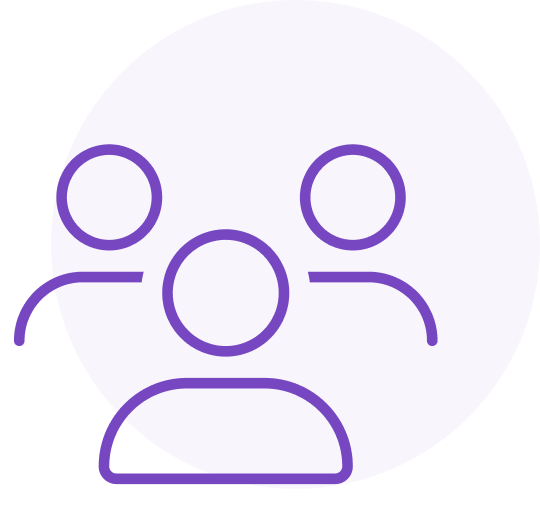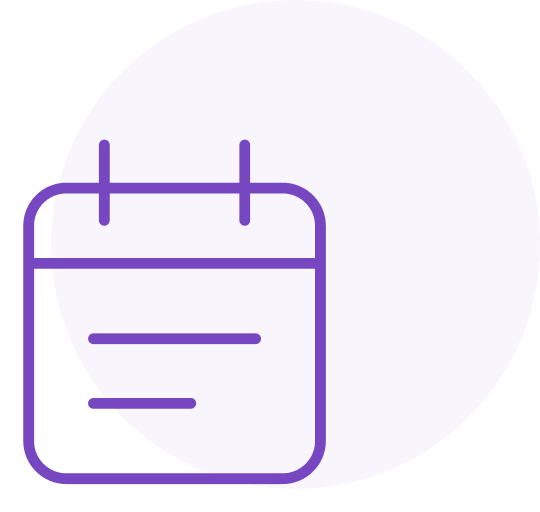This certificate provides the opportunity to practice the competencies of designing basic eLearning experiences, and to ensure the acquisition of eLearning experience design, and it enables obtaining the Professional Certificate in Designing eLearning Experiences at the advanced level.
Requirements:
How to obtain the certificate:
- Create an account on the Professional Certificate website.
- Upload the required and updated certificates and documents.
- Complete the professional certificate training in the eLearning Experience Design - Foundation level from one of the recommended institutions on the NeLC website.
- Practice designing eLearning experiences equivalent to 30 credits at a government, private or non-profit sector or participate in the design of digital courses or programs at a government, private or non-profit sector.
- Upload a proof of 30 hours practice on designing eLearning experiences on the Professional Certificate website.
- Pay the fees
Target Users
- Instructional Designers
- Digital Learning Specialists
- Teachers and faculty members
Fees
500 SR
Certificate validity
A year starting from the date of issuance
Competencies
Training is carried out according to specific competencies that the applicant acquires after training and qualifying from only some of the approved institutions by the National eLearning Center.
6
Domains
18
Competencies
54
Indicators
1.1 Digital Tools and Apps
1.1.a: Understanding of the need to design content that considers affordances of different types of devices and platforms.
1.1.b: Understanding of the need to find, evaluate, and select the right technology that will help to achieve learning objectives through the eLearning design process within the constraints of national policy.
1.2 Digital Citizenship
1.2.a: Awareness of the need to facilitate the design of eLearning experiences that model and promote responsible digital behavior through appropriate selections and use of tools and applications.
1.2.b: Awareness of the need to ensure there is the appropriate management of learner and educator personal data and privacy in devices, tools, and application
1.3 Digital Resources
1.3.a: Awareness of the need to find, evaluate, and curate quality online content resources relevant to learning objectives.
1.3.b: Understanding of the need to include multimodal resources to accommodate learners’ interests, experience, and levels of knowledge.
1.3.c: Awareness of the need to include activities that involve interactivity and, where appropriate, demonstrations and immersive learning environments.
1.3.d: Awareness of the need to provide alternative online resources to ensure inclusion and accessibility.
1.3.e Understanding of the need to relate theoretical perspectives to practical applications of relevance to learners' professional fields, making full use of multimedia, immersive, and augmented tools and applications.
1.4 Digital Troubleshooting
1.4.a: Awareness of the need for troubleshooting and resolving basic issues for themselves and for educators, faculty, and instructors.
2.1 Data and Analytics
2.1.a: Awareness of the need to consult with stakeholders to undertake a needs analysis of students and educators, faculty, and instructors for working online to meet teaching and learning objectives.
2.1.b: Awareness of the need for essential course maintenance and updates to technologies, tools, and applications.
2.2 Planning
2.2.a: Understanding of the need to apply national and institutional education policy to course design where relevant.
2.2.b: Understanding of the need to meet the applicable laws and mandates for accessibility and delivering online instruction to learners including those with disabilities.
2.2.c: Recognition of the importance of maintaining accurate records of information and communication.
3.1 Online Learning Design
3.1.a: Awareness of the need for design that takes account of the purpose and assumptions of each online course.
1.b: Understanding of the need to provide a range of tools and applications that meet the varying learning objectives and demands of each subject domain.
3.1.c: Awareness of the need to provide teacher or instructor-led as well as learner-centered and self-directed learning activities.
3.1.d: Recognition of the need to provide active learning activities in which learners can practice newly acquired skills and improve understanding, using interactive tools where appropriate.
3.1.e: Recognition of the need for collaborative learning activities to support the development of soft skills to enhance future career opportunities.
3.2 Synchronous and AsynchronousTeaching/Training and Learning
3.2.a: Recognition of the need to include synchronous and asynchronous activities to meet different learning objectives.
3.2.b: Awareness of the need for appropriate platforms for collaboration and communication between learners; between educators and learners; and between educators.
3.3 Engagement and Motivation
3.3.a: Awareness of the need for activities and assignments that provide learners with a degree of autonomy in addition to timely support that will motivate them to achieve the desired objectives.
3.3.b: Recognition of the need for authentic learning activities.
3.3.c: Recognition of the need for including simulations of real-world and hands-on learning experiences that allow trainees to practice their employability, engage in workplace scenarios, and grow further as individuals.
3.4 Inclusion and Extension
3.4.a: Awareness of the learning needs per individual learner.
3.4.b: Recognition of the need for cultural awareness by providing online resources that are appropriate, multicultural, and bias-free.
4.1 Assignments
4.1.a. Awareness of the need to design assignments that are clear, meaningful, and effective.
4.1.b: Awareness of the need to design assignments that demonstrate a practical application of learning objectives and, where relevant, include images or video evidence.
.1.c: Awareness of the need to design assignments in accordance with industry and academic guidelines, real-world experience, and professional learning objectives.
4.2 Examinations
4.2.a: Awareness of the need for assessment criteria to be aligned with learning objectives and outcomes.
4.2.b. Awareness of the need to set formal and informal formative assessment points throughout an online course.
4.2.c: Recognizes the learning opportunities and value of designing online peer and self-assessment strategies.
4.2.d: Awareness of the need for appropriate assessment methods that best suit the purpose given the skills, abilities, and outcomes the instructor is evaluating, including the business demands of the workplace and industries.
4.2.e: Awareness of the need to design assessments that can easily detect plagiarism.
4.2.f: Recognizes the need for the use of identity verification mechanisms during examinations & assessments.
5.1 Learners
5.1.a: Awareness of the need for effective online communication strategies to elicit feedback from learners.
5.1.b: Understanding of the potential for creating online communities for learner collaboration and for peer teaching/training.
5.1.c: Awareness of the need to communicate with all stakeholders to gain feedback on course design and operation.
5.2 Educators
5.2.a: Skill in building positive and collaborative relationships with educators and other relevant colleagues to design eLearning courses.
5.2.b: Awareness of the need to communicate and engage with educators throughout the online course design process.
5.2.c: Awareness of the need to provide clear guidelines for educators to insert their own resources and assignments into a course.
5.2.d: Recognition of the need to work across departments to ensure a seamless and similar learning experience on cross-and interdisciplinary courses.
5.3.a: Awareness of the need to communicate and consult regularly using the appropriate online formats and channels.
5.3.b: Awareness of the need for feedback and response to directives in a timely manner.
5.3.c: Awareness of the need to communicate evaluation feedback from learners, parents, and educators.
6.1 Reflection
6.1.a: Awareness of the need for personal and professional opportunities for growth.
6.1.b: Awareness of the need to gather feedback from learners, parents, and colleagues to continuously improve eLearning design.
6.2 Time Management
6.2.a: Awareness of the need to demonstrate effective time management strategies.
6.2.b: Awareness of the need to sequence all aspects of the eLearning design process to achieve timely results.
6.2.c: Awareness of the need to set timelines and managing stakeholders to provide course deliverables on time.
6.3 Lifelong Learning
6.3.a: Awareness of the need to develop, maintain, and leverage professional networks across a range of people and groups internal and external of the organization.
6.3.b: Awareness of the need to continually develop their own subject knowledge and keep abreast of new advancements in learning experience design.
6.3.c: Awareness of the need to establish a professional voice that creates ongoing credibility for the eLearning program design by participating with a view to presenting at conferences and conducting scholarly research into effective eLearning design.



